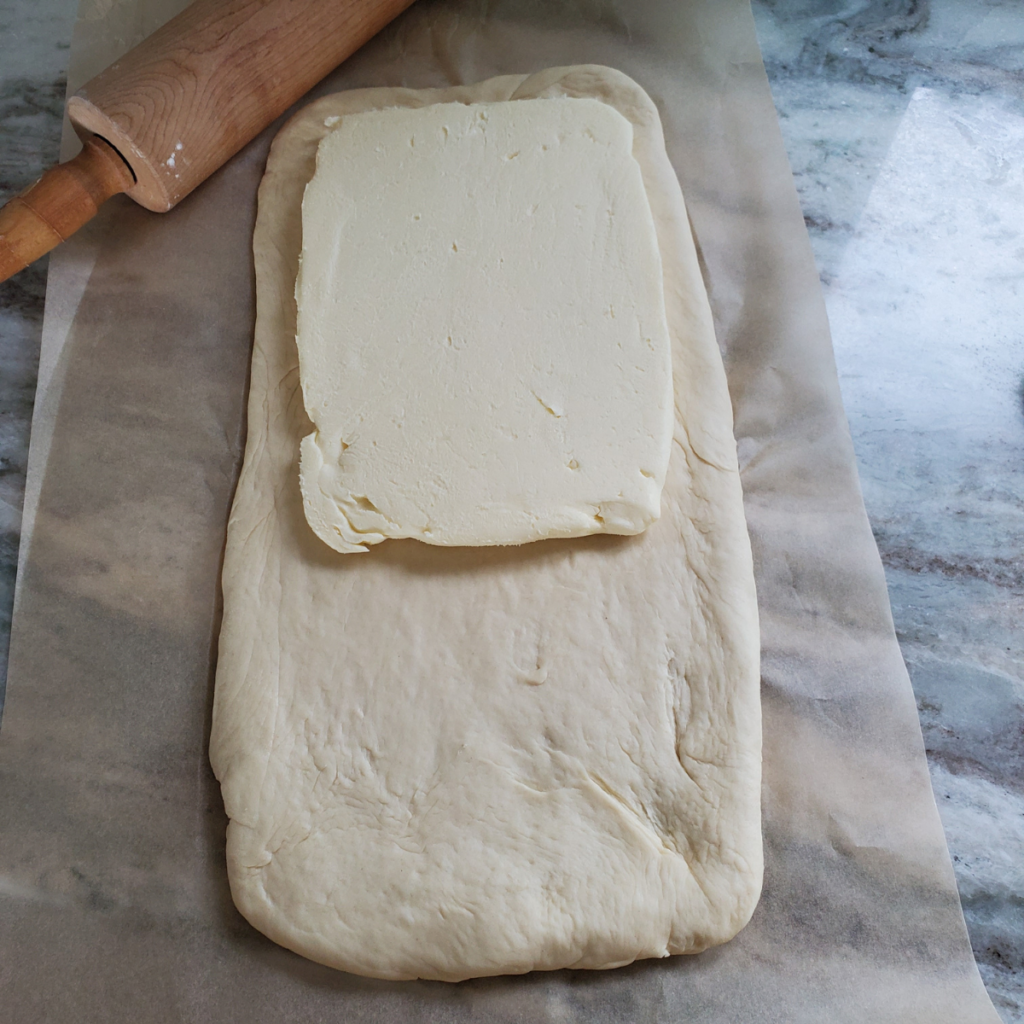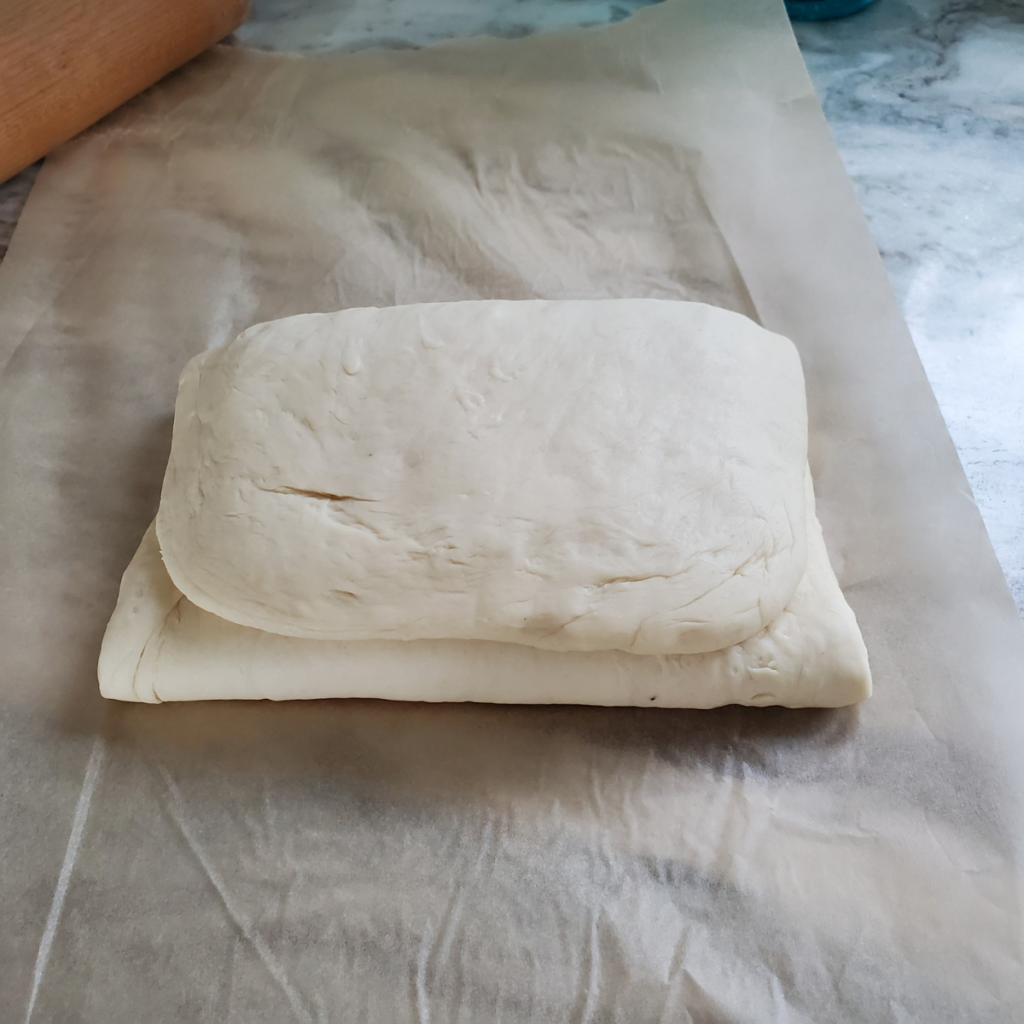


In case this is the first time you’re reading about croissants and haven’t done much research yet, here’s a quick breakdown of the techniques you’ll need to create layered flaky pastry dough.
Pastry dough consists of dozens of layers of butter and dough all stacked together. During baking, water in the butter creates steam and expands which makes the dough puff up and separate while the butter itself basically fries the dough. The result is lovely little spaces separating yummy, flaky, buttery layers. This is called Lamination.
First you have to assemble the butter and dough so it can be rolled without blending together. A solid rectangle of butter is laid out over the top two thirds of a sheet of dough, then folded and sealed inside like a package. As long as the dough and the butter are both and cold they stay solid and don’t blend together, this technique creates individual stacked layers.



Now you laminate the pastry dough using a series of “turns”. A “turn” is a 3-step technique in which you fold the dough in thirds like mailing a letter, rotate it ¼ turn counter-clockwise, and roll it back out.
To achieve the lightest and flakiest pastry I like to complete 5 “turns” of the dough, resting the dough for at least 30 minutes in between each turn, and then finally resting overnight. This process creates nearly 100 layers of flaky pastry dough! So buckle-in and stay patient – because the key to pastry success isn’t flair, its patience.

